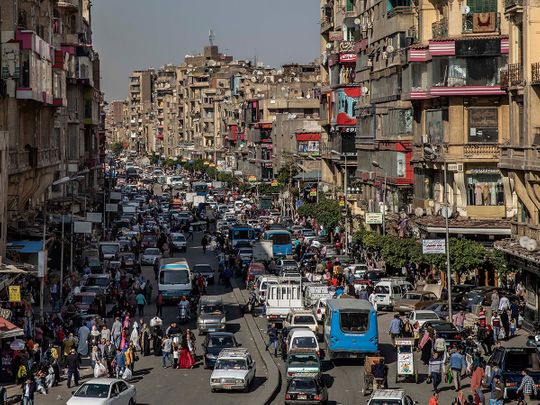
By the time coronavirus cases began to creep up in Egypt in May, disruptions to trade and tourism left a trail of job losses that now threaten more than a half-decade of declining unemployment in the Arab world's most populous nation.
As Egypt was preparing to reopen for business after three months of partial economic shutdown, state statistics agency CAPMAS gave a glimpse into the labour market with a study about COVID-19's impact.
More than a quarter of employed Egyptians lost their jobs between the end of February and May, even as they sought to keep working during the pandemic, the report showed. It didn't say how many people were surveyed.
Egypt in March suspended international flights, banned mass gatherings and imposed a 7 p.m. to 6 a.m. curfew while calling on people to cut travel between provinces. After gradually reducing the hours, in late June authorities lifted the curfew and allowed cafes and restaurants to operate with limited capacity, although businesses have to keep shorter hours. Airports and many of the major tourist sites, including the pyramids, have reopened.
The number of new virus infections reported has declined in recent days. And the relaxation of restrictions is already making a difference for the non-oil private sector, with business conditions rebounding in June to a four-month high. But the challenge now is to translate the improved outlook into gains for the labor market.
Egyptian firms last month reduced employment at the quickest rate in nearly four years, according to IHS Markit. The unemployment rate reached 9.7% in April, according to the Planning Ministry, compared with 7.9% at the end of last year.
"The government is trying to balance between health and the economy," Prime Minister Mostafa Madbouly said at a televised news conference as he made a case for easing the containment measures.
The government earlier cut its economic growth projections for the fiscal year that started in July, but the depth of the slowdown depends on when the contagion will subside. According to the CAPMAS report, about 90% of Egypt's households switched to cheaper food to adjust to the new circumstances.
Planning Minister Hala El-Saeed said in a statement that unemployment has especially affected workers in the services sector, which accounts for more than 17% of the total.
The government gave a monthly 500-pound ($31) payment to workers in tourism and the informal sector between April and June. The North African nation, where around a third of the population lives under the poverty line, has allocated more than $6 billion to combat the impact of the virus.
Still, almost half of Egyptian families had to borrow money to make up for a decline in their incomes. About 70% of households saw their income fall since the coronavirus started, according to the CAPMAS study.
For a recovery in the labor market to take hold, Egypt would need to see an improvement in tourism, one of the biggest employers. According to the United Nations Conference on Trade and Development, Egypt is among a handful of countries where the collapse of tourism could cost 3% of gross domestic product or more this year.
Despite the job losses, IHS Markit believes a turnaround isn't far off. A measure of conditions in the non-oil private sector bounced back in June thanks to slower rates of decline in new business and activity, according to a report on Monday.
"Employment numbers still fell at an accelerated rate in June, although multiple signals suggest this will soon change," David Owen, economist at IHS Markit, said in the report. "Higher demand at some companies, increased backlogs and sentiment rising to a six-month high all point to firms hopefully restarting hiring in the near future."








